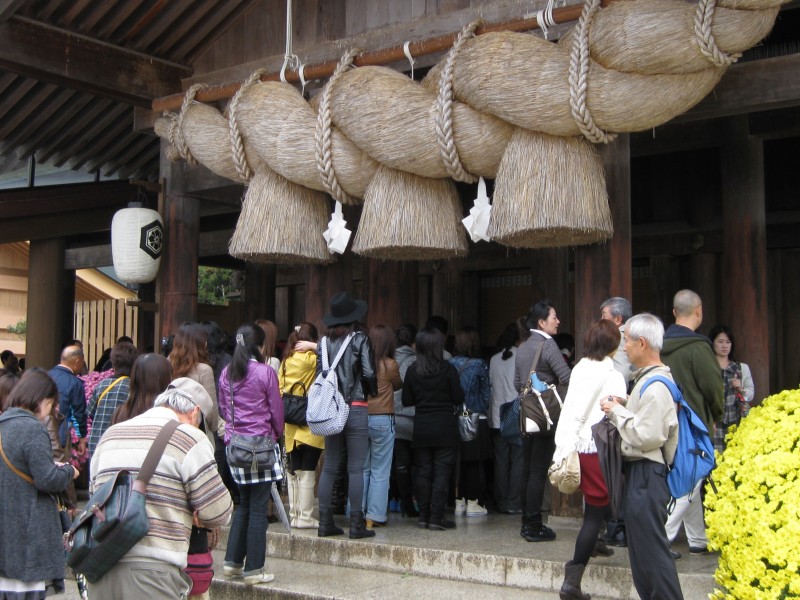The scholar Takagi Hiroshi writes that: “After the Meiji Restoration, an idea of the everlasting and unbroken single line of emperors was created, and at the same time, closely related to that idea, imperial mausoleums were invented anew. The latter … Read the rest
Category: Mythology (Page 3 of 11)
Last Monday David Lurie of Columbia University gave a talk in Kyoto about ‘Dead Goddesses and Living Narratives’. It centred around the differences between the Kojiki (712) and Nihon Shoki (720). As is well-known, the two books cover similar myths … Read the rest
The circular mirror of Shinto is a potent symbol. One often sees it when visiting shrines, for it stands on the altar as representative of the kami, and in particular of Amaterasu the sun goddess. It can play a more … Read the rest
 Most people assume Ise Jingu is Japan’s oldest shrine. Mythical and archaeological evidence however says that it is Izumo Taisha. It was once the country’s most prestigious shrine, being supplanted by the propagandists of Yamato who incorporated it into the … Read the rest
Most people assume Ise Jingu is Japan’s oldest shrine. Mythical and archaeological evidence however says that it is Izumo Taisha. It was once the country’s most prestigious shrine, being supplanted by the propagandists of Yamato who incorporated it into the … Read the rest
Just outside Matsue City in Shimane Prefecture is the hot spring resort of Tamatsukuri Onsen. Tamatsukuri translates as Making Jewels, for it was at this place in ancient times that magatama were made. An actual site has been excavated with … Read the rest
Japan’s central myth is that Amaterasu, the sun-goddess, retired to a Rock Cave after the upsetting antics of her brother, Susanoo. As a result the world was deprived of her radiant light. Some have interpreted this as a reference to … Read the rest
It’s kamiari time in Izumo, when all the gods of Japan (except Ebisu) gather for their annual meeting in Shimane. How appropriate then that Green Shinto should carry a piece about Shimane.
2012 marked 1300 years since the publication of … Read the rest
